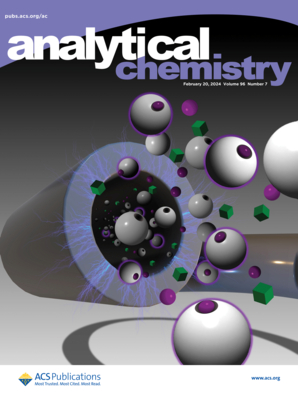便携式发光计串联生物发光快速检测尿路感染和抗菌素耐药性
IF 6.7
1区 化学
Q1 CHEMISTRY, ANALYTICAL
引用次数: 0
摘要
尿路感染是世界上最常见的细菌感染之一。此外,抗菌素耐药性(AMR)的增加使有效治疗尿路感染的任务进一步复杂化,从而构成严重的公共卫生危害。尿路感染和抗生素耐药性的标准诊断需要使用实验室基础设施、训练有素的人员和较长的处理时间,所有这些都是增加医疗费用和不适当抗生素治疗的因素。在这里,我们设计了基于生物发光的UTI和AMR检测测试,可以使用便携式光度计在约30分钟内串联进行。迄今为止,还没有报道使用相同的检测原理和便携式设备同时检测UTI和AMR的方法,这在简化测试方面提供了显着优势。我们的UTI检测基于全细胞生物发光检测,AMR检测采用改进的基于atp的生物发光检测。我们的测试可以在5分钟内检测到UTI,细菌水平低至20,000 CFU/mL,达到临床重要阈值100,000 CFU/mL。使用改良的基于atp的生物发光试验在30分钟内监测抗生素耐药性。该试验未显示来自潜在尿液成分的干扰,如葡萄糖、尿素、共生菌群或pH变化。使用这些测试的临床样本(n = 8)分析显示,诊断UTI和AMR的准确率为100%。这些使用便携式生物发光读取器的串联检测可能最大限度地减少诊断延误,以便在临床或社区卫生机构中立即做出临床决定并优化抗生素治疗。本文章由计算机程序翻译,如有差异,请以英文原文为准。
Tandem Bioluminescent Tests for Rapid Detection of Urinary Tract Infections and Antimicrobial Resistance Using a Portable Luminometer.
Urinary tract infections (UTIs) are among the most common bacterial infections in the world. Additionally, increasing antimicrobial resistance (AMR) further complicates the task of effective therapy for UTIs and, thus, presents a serious public health hazard. The standard diagnosis for UTI and AMR requires access to laboratory infrastructures, well-trained personnel, and long periods of processing time, all of which are factors increasing healthcare costs and inappropriate antibiotic treatment. Here, we designed bioluminescence-based tests for UTI and AMR detection that can be performed in tandem using a portable luminometer in ∼30 min. To date, no methods have been reported that can simultaneously detect both UTI and AMR using the same detection principle and portable device as described here, offering a significant advantage in streamlining testing. Our UTI test is based on whole-cell bioluminescence assay, and AMR detection employs a modified ATP-based bioluminescence detection. Our test can detect UTI in 5 min at a bacterial level as low as 20,000 CFU/mL, which meets the clinically significant threshold of 100,000 CFU/mL. Antibiotic resistance was monitored using a modified ATP-based bioluminescence test within 30 min. The test showed no interference from potential urinary components, such as glucose, urea, commensal flora, or pH variations. A clinical sample (n = 8) analysis using these tests showed 100% accuracy in diagnosing UTI and AMR. These tandem tests using a portable bioluminescent reader could potentially minimize delays in diagnosis to allow immediate clinical decisions and optimization of treatment with antibiotics in clinical or community health settings.
求助全文
通过发布文献求助,成功后即可免费获取论文全文。
去求助
来源期刊

Analytical Chemistry
化学-分析化学
CiteScore
12.10
自引率
12.20%
发文量
1949
审稿时长
1.4 months
期刊介绍:
Analytical Chemistry, a peer-reviewed research journal, focuses on disseminating new and original knowledge across all branches of analytical chemistry. Fundamental articles may explore general principles of chemical measurement science and need not directly address existing or potential analytical methodology. They can be entirely theoretical or report experimental results. Contributions may cover various phases of analytical operations, including sampling, bioanalysis, electrochemistry, mass spectrometry, microscale and nanoscale systems, environmental analysis, separations, spectroscopy, chemical reactions and selectivity, instrumentation, imaging, surface analysis, and data processing. Papers discussing known analytical methods should present a significant, original application of the method, a notable improvement, or results on an important analyte.
 求助内容:
求助内容: 应助结果提醒方式:
应助结果提醒方式:


